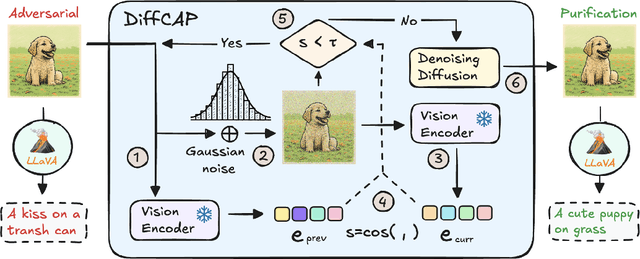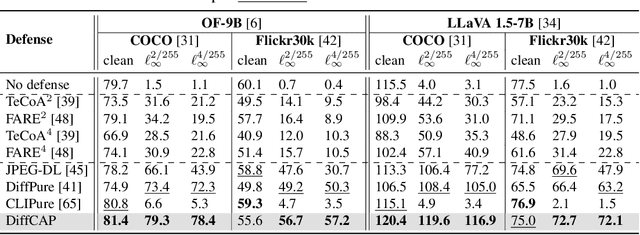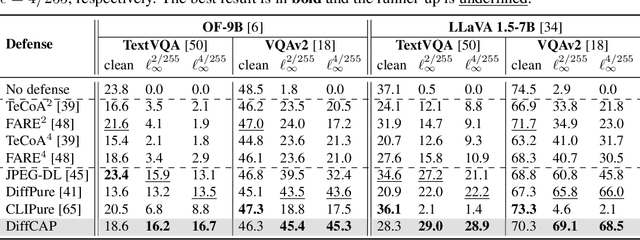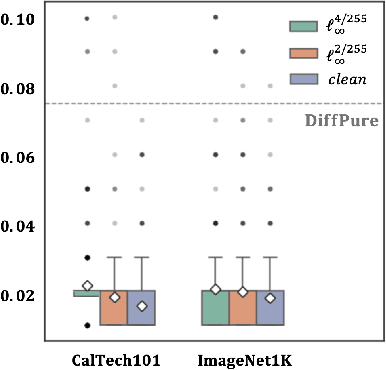Kunyu Peng
EReLiFM: Evidential Reliability-Aware Residual Flow Meta-Learning for Open-Set Domain Generalization under Noisy Labels
Oct 14, 2025



Abstract:Open-Set Domain Generalization (OSDG) aims to enable deep learning models to recognize unseen categories in new domains, which is crucial for real-world applications. Label noise hinders open-set domain generalization by corrupting source-domain knowledge, making it harder to recognize known classes and reject unseen ones. While existing methods address OSDG under Noisy Labels (OSDG-NL) using hyperbolic prototype-guided meta-learning, they struggle to bridge domain gaps, especially with limited clean labeled data. In this paper, we propose Evidential Reliability-Aware Residual Flow Meta-Learning (EReLiFM). We first introduce an unsupervised two-stage evidential loss clustering method to promote label reliability awareness. Then, we propose a residual flow matching mechanism that models structured domain- and category-conditioned residuals, enabling diverse and uncertainty-aware transfer paths beyond interpolation-based augmentation. During this meta-learning process, the model is optimized such that the update direction on the clean set maximizes the loss decrease on the noisy set, using pseudo labels derived from the most confident predicted class for supervision. Experimental results show that EReLiFM outperforms existing methods on OSDG-NL, achieving state-of-the-art performance. The source code is available at https://github.com/KPeng9510/ERELIFM.
MICA: Multi-Agent Industrial Coordination Assistant
Sep 17, 2025Abstract:Industrial workflows demand adaptive and trustworthy assistance that can operate under limited computing, connectivity, and strict privacy constraints. In this work, we present MICA (Multi-Agent Industrial Coordination Assistant), a perception-grounded and speech-interactive system that delivers real-time guidance for assembly, troubleshooting, part queries, and maintenance. MICA coordinates five role-specialized language agents, audited by a safety checker, to ensure accurate and compliant support. To achieve robust step understanding, we introduce Adaptive Step Fusion (ASF), which dynamically blends expert reasoning with online adaptation from natural speech feedback. Furthermore, we establish a new multi-agent coordination benchmark across representative task categories and propose evaluation metrics tailored to industrial assistance, enabling systematic comparison of different coordination topologies. Our experiments demonstrate that MICA consistently improves task success, reliability, and responsiveness over baseline structures, while remaining deployable on practical offline hardware. Together, these contributions highlight MICA as a step toward deployable, privacy-preserving multi-agent assistants for dynamic factory environments. The source code will be made publicly available at https://github.com/Kratos-Wen/MICA.
Hallucinating 360°: Panoramic Street-View Generation via Local Scenes Diffusion and Probabilistic Prompting
Jul 09, 2025



Abstract:Panoramic perception holds significant potential for autonomous driving, enabling vehicles to acquire a comprehensive 360{\deg} surround view in a single shot. However, autonomous driving is a data-driven task. Complete panoramic data acquisition requires complex sampling systems and annotation pipelines, which are time-consuming and labor-intensive. Although existing street view generation models have demonstrated strong data regeneration capabilities, they can only learn from the fixed data distribution of existing datasets and cannot achieve high-quality, controllable panoramic generation. In this paper, we propose the first panoramic generation method Percep360 for autonomous driving. Percep360 enables coherent generation of panoramic data with control signals based on the stitched panoramic data. Percep360 focuses on two key aspects: coherence and controllability. Specifically, to overcome the inherent information loss caused by the pinhole sampling process, we propose the Local Scenes Diffusion Method (LSDM). LSDM reformulates the panorama generation as a spatially continuous diffusion process, bridging the gaps between different data distributions. Additionally, to achieve the controllable generation of panoramic images, we propose a Probabilistic Prompting Method (PPM). PPM dynamically selects the most relevant control cues, enabling controllable panoramic image generation. We evaluate the effectiveness of the generated images from three perspectives: image quality assessment (i.e., no-reference and with reference), controllability, and their utility in real-world Bird's Eye View (BEV) segmentation. Notably, the generated data consistently outperforms the original stitched images in no-reference quality metrics and enhances downstream perception models. The source code will be publicly available at https://github.com/Bryant-Teng/Percep360.
HopaDIFF: Holistic-Partial Aware Fourier Conditioned Diffusion for Referring Human Action Segmentation in Multi-Person Scenarios
Jun 11, 2025Abstract:Action segmentation is a core challenge in high-level video understanding, aiming to partition untrimmed videos into segments and assign each a label from a predefined action set. Existing methods primarily address single-person activities with fixed action sequences, overlooking multi-person scenarios. In this work, we pioneer textual reference-guided human action segmentation in multi-person settings, where a textual description specifies the target person for segmentation. We introduce the first dataset for Referring Human Action Segmentation, i.e., RHAS133, built from 133 movies and annotated with 137 fine-grained actions with 33h video data, together with textual descriptions for this new task. Benchmarking existing action recognition methods on RHAS133 using VLM-based feature extractors reveals limited performance and poor aggregation of visual cues for the target person. To address this, we propose a holistic-partial aware Fourier-conditioned diffusion framework, i.e., HopaDIFF, leveraging a novel cross-input gate attentional xLSTM to enhance holistic-partial long-range reasoning and a novel Fourier condition to introduce more fine-grained control to improve the action segmentation generation. HopaDIFF achieves state-of-the-art results on RHAS133 in diverse evaluation settings. The code is available at https://github.com/KPeng9510/HopaDIFF.git.
DiffCAP: Diffusion-based Cumulative Adversarial Purification for Vision Language Models
Jun 04, 2025



Abstract:Vision Language Models (VLMs) have shown remarkable capabilities in multimodal understanding, yet their susceptibility to perturbations poses a significant threat to their reliability in real-world applications. Despite often being imperceptible to humans, these perturbations can drastically alter model outputs, leading to erroneous interpretations and decisions. This paper introduces DiffCAP, a novel diffusion-based purification strategy that can effectively neutralize adversarial corruptions in VLMs. We observe that adding minimal noise to an adversarially corrupted image significantly alters its latent embedding with respect to VLMs. Building on this insight, DiffCAP cumulatively injects random Gaussian noise into adversarially perturbed input data. This process continues until the embeddings of two consecutive noisy images reach a predefined similarity threshold, indicating a potential approach to neutralize the adversarial effect. Subsequently, a pretrained diffusion model is employed to denoise the stabilized image, recovering a clean representation suitable for the VLMs to produce an output. Through extensive experiments across six datasets with three VLMs under varying attack strengths in three task scenarios, we show that DiffCAP consistently outperforms existing defense techniques by a substantial margin. Notably, DiffCAP significantly reduces both hyperparameter tuning complexity and the required diffusion time, thereby accelerating the denoising process. Equipped with strong theoretical and empirical support, DiffCAP provides a robust and practical solution for securely deploying VLMs in adversarial environments.
Exploring Video-Based Driver Activity Recognition under Noisy Labels
Apr 16, 2025Abstract:As an open research topic in the field of deep learning, learning with noisy labels has attracted much attention and grown rapidly over the past ten years. Learning with label noise is crucial for driver distraction behavior recognition, as real-world video data often contains mislabeled samples, impacting model reliability and performance. However, label noise learning is barely explored in the driver activity recognition field. In this paper, we propose the first label noise learning approach for the driver activity recognition task. Based on the cluster assumption, we initially enable the model to learn clustering-friendly low-dimensional representations from given videos and assign the resultant embeddings into clusters. We subsequently perform co-refinement within each cluster to smooth the classifier outputs. Furthermore, we propose a flexible sample selection strategy that combines two selection criteria without relying on any hyperparameters to filter clean samples from the training dataset. We also incorporate a self-adaptive parameter into the sample selection process to enforce balancing across classes. A comprehensive variety of experiments on the public Drive&Act dataset for all granularity levels demonstrates the superior performance of our method in comparison with other label-denoising methods derived from the image classification field. The source code is available at https://github.com/ilonafan/DAR-noisy-labels.
VISO-Grasp: Vision-Language Informed Spatial Object-centric 6-DoF Active View Planning and Grasping in Clutter and Invisibility
Mar 16, 2025Abstract:We propose VISO-Grasp, a novel vision-language-informed system designed to systematically address visibility constraints for grasping in severely occluded environments. By leveraging Foundation Models (FMs) for spatial reasoning and active view planning, our framework constructs and updates an instance-centric representation of spatial relationships, enhancing grasp success under challenging occlusions. Furthermore, this representation facilitates active Next-Best-View (NBV) planning and optimizes sequential grasping strategies when direct grasping is infeasible. Additionally, we introduce a multi-view uncertainty-driven grasp fusion mechanism that refines grasp confidence and directional uncertainty in real-time, ensuring robust and stable grasp execution. Extensive real-world experiments demonstrate that VISO-Grasp achieves a success rate of $87.5\%$ in target-oriented grasping with the fewest grasp attempts outperforming baselines. To the best of our knowledge, VISO-Grasp is the first unified framework integrating FMs into target-aware active view planning and 6-DoF grasping in environments with severe occlusions and entire invisibility constraints.
MindAligner: Explicit Brain Functional Alignment for Cross-Subject Visual Decoding from Limited fMRI Data
Feb 07, 2025



Abstract:Brain decoding aims to reconstruct visual perception of human subject from fMRI signals, which is crucial for understanding brain's perception mechanisms. Existing methods are confined to the single-subject paradigm due to substantial brain variability, which leads to weak generalization across individuals and incurs high training costs, exacerbated by limited availability of fMRI data. To address these challenges, we propose MindAligner, an explicit functional alignment framework for cross-subject brain decoding from limited fMRI data. The proposed MindAligner enjoys several merits. First, we learn a Brain Transfer Matrix (BTM) that projects the brain signals of an arbitrary new subject to one of the known subjects, enabling seamless use of pre-trained decoding models. Second, to facilitate reliable BTM learning, a Brain Functional Alignment module is proposed to perform soft cross-subject brain alignment under different visual stimuli with a multi-level brain alignment loss, uncovering fine-grained functional correspondences with high interpretability. Experiments indicate that MindAligner not only outperforms existing methods in visual decoding under data-limited conditions, but also provides valuable neuroscience insights in cross-subject functional analysis. The code will be made publicly available.
Graph-based Document Structure Analysis
Feb 04, 2025



Abstract:When reading a document, glancing at the spatial layout of a document is an initial step to understand it roughly. Traditional document layout analysis (DLA) methods, however, offer only a superficial parsing of documents, focusing on basic instance detection and often failing to capture the nuanced spatial and logical relations between instances. These limitations hinder DLA-based models from achieving a gradually deeper comprehension akin to human reading. In this work, we propose a novel graph-based Document Structure Analysis (gDSA) task. This task requires that model not only detects document elements but also generates spatial and logical relations in form of a graph structure, allowing to understand documents in a holistic and intuitive manner. For this new task, we construct a relation graph-based document structure analysis dataset (GraphDoc) with 80K document images and 4.13M relation annotations, enabling training models to complete multiple tasks like reading order, hierarchical structures analysis, and complex inter-element relation inference. Furthermore, a document relation graph generator (DRGG) is proposed to address the gDSA task, which achieves performance with 57.6% at mAP$_g$@0.5 for a strong benchmark baseline on this novel task and dataset. We hope this graphical representation of document structure can mark an innovative advancement in document structure analysis and understanding. The new dataset and code will be made publicly available at https://yufanchen96.github.io/projects/GraphDoc.
Mitigating Label Noise using Prompt-Based Hyperbolic Meta-Learning in Open-Set Domain Generalization
Dec 24, 2024



Abstract:Open-Set Domain Generalization (OSDG) is a challenging task requiring models to accurately predict familiar categories while minimizing confidence for unknown categories to effectively reject them in unseen domains. While the OSDG field has seen considerable advancements, the impact of label noise--a common issue in real-world datasets--has been largely overlooked. Label noise can mislead model optimization, thereby exacerbating the challenges of open-set recognition in novel domains. In this study, we take the first step towards addressing Open-Set Domain Generalization under Noisy Labels (OSDG-NL) by constructing dedicated benchmarks derived from widely used OSDG datasets, including PACS and DigitsDG. We evaluate baseline approaches by integrating techniques from both label denoising and OSDG methodologies, highlighting the limitations of existing strategies in handling label noise effectively. To address these limitations, we propose HyProMeta, a novel framework that integrates hyperbolic category prototypes for label noise-aware meta-learning alongside a learnable new-category agnostic prompt designed to enhance generalization to unseen classes. Our extensive experiments demonstrate the superior performance of HyProMeta compared to state-of-the-art methods across the newly established benchmarks. The source code of this work is released at https://github.com/KPeng9510/HyProMeta.
 Add to Chrome
Add to Chrome Add to Firefox
Add to Firefox Add to Edge
Add to Edge